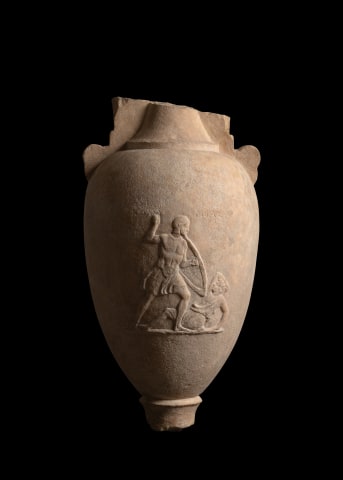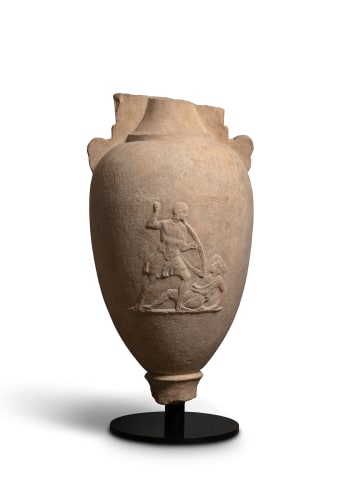Loutrophoroi were vessels used by the Greeks during nuptial and funerary rituals. Production of large tomb markers such as this, which lined the roads on the outskirts of the city, was short lived, for in 317 BC Demetrios Phalereus issued a decree prohibiting luxurious funerary monuments.
The scene on the front of this grave marker is rife with symbolism. At first glance, it is simply a retelling of the famous fight of the Greeks against the wild Amazons. To the ancient Greeks, the existence of the Amazons represented a distortion of natural order; one where women roamed wild, would fight, hunt and rule, and where they didn’t need men in their society. Their defeat by the civilised Greeks represented the triumph of order over chaos; of West over East (or more often than not, of Athens over Persia). The Amazon is represented with one breast exposed, which signified pre- ordained defeat. In the present example, we are viewing the end of a battle, where a man stands triumphant over the fallen. One might presume a link is being drawn between the warrior and the man being commemorated — perhaps he was a soldier, or a politician instrumental in military or foreign affairs.
Provenance
René Huyghe (1906-1997), Paris, France; acquired prior to 1974. Previously on a mount dating to at least the early 20th century
Huyghe was an art historian.
A faded circular label on the back of the restored handle bears the number 152 handwritten in red ink.



